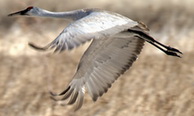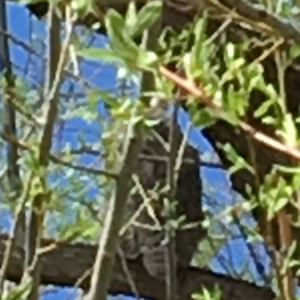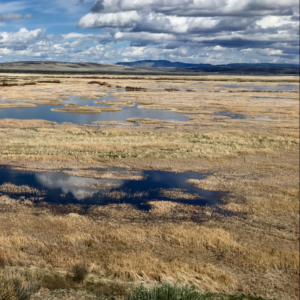Return to Malheur
I first visited the Malheur National Wildlife Refuge when I was a field zoology student at Willamette University in, well, long ago. Then I was enchanted by the vast spaces, the quiet, the desert, the wetlands and the wildlife. In particular the birds. Malheur is a prime migratory bird habitat on the north/ south flyway.
 Among the birds that show up at Malheur one of the most dramatic is the Sandhill Crane. These were made famous (at least to me) by Aldo Leopold and his environmental classic, A Sand County Almanac. The Sandhill Cranes are a large elegant bird (see right) with a remarkable staccato call and a ballet-like courtship dance.
Among the birds that show up at Malheur one of the most dramatic is the Sandhill Crane. These were made famous (at least to me) by Aldo Leopold and his environmental classic, A Sand County Almanac. The Sandhill Cranes are a large elegant bird (see right) with a remarkable staccato call and a ballet-like courtship dance.
 This week I returned to Malheur, accompanied by my good friend, Dave Regnier. I think it’s safe to say we were both enchanted.
This week I returned to Malheur, accompanied by my good friend, Dave Regnier. I think it’s safe to say we were both enchanted.
We were particularly excited to spot the colorful Western Tananger, several species of Ibis, Sandhill Cranes, various types of blackbirds (Yellow-headed and Red-winged), swallows, many Marsh Hawks aka “Harriers,” and the Great Horned Owl (see above on branch). We also saw antelope, coyote, ring-necked pheasant and all manner of ducks and waterfowl. We looked for a herd of wild horses that we heard about, but didn’t find them.
It was not only the sights that were magical, but also the sounds. Beside and overlooking the huge wetlands the clicks and clucks of ducks, the calls of geese, and the cheeps of blackbirds were a delightful symphony.
 The Malheur Refuge was established in 1908 by President Theodore Roosevelt. The idea was to protect migrating and nesting bird species that had been over-hunted for hat plumage in the the nineteenth century.
The Malheur Refuge was established in 1908 by President Theodore Roosevelt. The idea was to protect migrating and nesting bird species that had been over-hunted for hat plumage in the the nineteenth century.
Today the Refuge is 188,000 acres of wetlands in the High Desert of Harney County in southeastern Oregon. The nearest town of any size is Burns, Oregon. All in all it is pretty remote. At the southeastern edges of the Refuge is the 10,000 foot Steens Mountain. The foothills of Steens Mountain and Hart Mountain to the southwest, are home to antelope and wild horses herds.
Malheur jumped into the nation’s consciousness in January 2016 when the Refuge Headquarters was “occupied” by members of the local Hammond and Nevada Bundy families, and sympathizers. They claimed the federal government had “tyrannized” local landowners. Their action was, they said, “in defense of the Constitution.” The standoff lasted 41 days. One man, a protester, was killed.
The remote, tranquil Refuge seemed an odd place for such a protest. But it is one of the more visible outposts of the U.S. Government in the vast high desert. In retrospect, the occupation seemed an early warning shot from the various populist movements to which Donald Trump appealed the following fall.
Now the Refuge seems to have returned to normal, with visitors like us plying the gravel Central Patrol Road (CPR) in search of birds and wetland beauty (see third photo above). Since I was there many years ago the Refuge has produced a nice CD to accompany an auto tour of the Refuge. We combined that auto tour with a number of relatively short hikes. Nearby Burns now hosts a Migratory Bird Festival in early April.
Dave and I share an interest in painting and sketching, so we spent several hours one afternoon alongside the Blitzen River practicing our craft.
Being in such vast, open land is a comfort to the soul, as are the many efforts over the years of Refuge staff and volunteers to manage and enhance this resource.
![Anthony B. Robinson [logo]](https://www.anthonybrobinson.com/wp-content/themes/anthonybrobinson/images/logo.png)
![Anthony B. Robinson [logo]](https://www.anthonybrobinson.com/wp-content/themes/anthonybrobinson/images/logo-print.png)